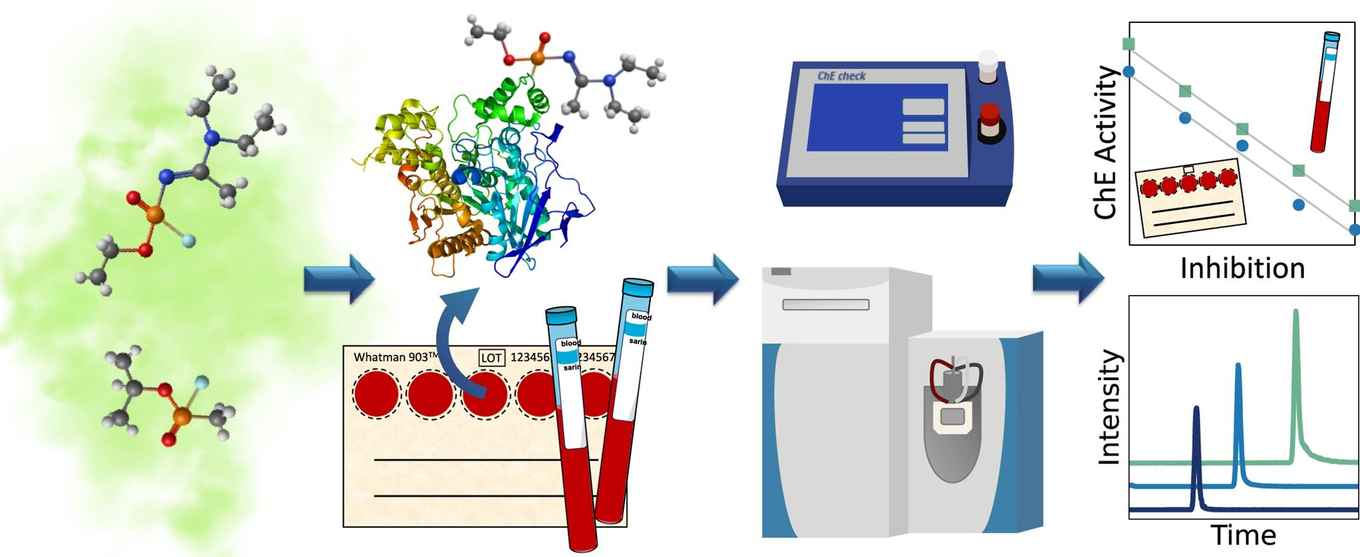Detecting nerve agent biomarkers in dried blood spots
11 September 2023

The research establishes that the on-scene analysis of biomarkers in dried blood spots followed by laboratory verification is a promising analysis scheme to verify nerve agent exposure. Nerve agent biomarkers in dried blood spots are very stable and can be detected at least one month after application on a protein saver card and storage under ambient conditions. Furthermore, the implementation in forensic practice is relatively straightforward. The method should however be confirmed in practice with regular and dried blood spot samples from an alleged exposure victim or animal model exposure studies. Furthermore, future research should focus on the improvement of the sample preparation methods to further lower the detection limit and fully validate the quantitative method.
The research is part of the Forensic Attribution for CWA INtelliGence (FACING) project, a collaboration between the Van 't Hoff Institute for Molecular Sciences (HIMS) of the University of Amsterdam and TNO Defence, Safety & Security. The research was performed at the Netherlands Forensic Institute (NFI). Also involved were the Organisation for the Prohibition of Chemical Weapons and the CLHC Amsterdam Center for Forensic Science and Medicine. The FACING project is financed by the Dutch Ministry of Defence.
Paper abstract
The analysis of biomedical samples is important for the investigation of the alleged exposure to chemical warfare agents. The present study aims to use dried blood spots for portable detection and laboratory verification of organophosphate poisoning. After in-vitro incubation of blood with Novichok A-230, A-232 and A-234 and sarin, a volume of 25 and 50 µL was spotted on a protein saver card. Subsequently, the dried spots were extracted and analyzed by a mobile cholinesterase test kit. In addition, butyrylcholinesterase (BChE) was isolated and digested by pepsin followed by analysis with liquid chromatography tandem mass spectrometry (LC-MS/MS). The fluoride-activated samples were analyzed by gas chromatography tandem mass spectrometry (GC–MS/MS) and LC-MS/MS. It was found that the CWA induced cholinesterase inhibition was remarkably stable in dried blood spots. Even after at least one month storage under ambient conditions, the same linear reduction was visible as function of nerve agent exposure. Additionally, nonapeptide adducts were identified by LC-MS/MS one month after exposure. Also, intact Novichok nerve agents and regenerated sarin were observed by GC–MS/MS. In addition to the stability of the sample, important benefits of the proposed method include the less invasive sample collection and safer and easier shipping and storage conditions. In conclusion, this study shows the feasibility of using on-site detection and state-of-the-art laboratory analysis of dried blood spots for unambiguous verification of nerve agent exposure.
Paper details
Mirjam de Bruin-Hoegée, Alex Fidder, Tomas van Groningen, Marcel J. van der Schans, Daan Noort, Arian C. van Asten: On-site detection and laboratory verification of the presence of nerve agent biomarkers using dried blood spots, Forensic Chemistry, Volume 35,2023, 100526, DOI: 10.1016/j.forc.2023.100526